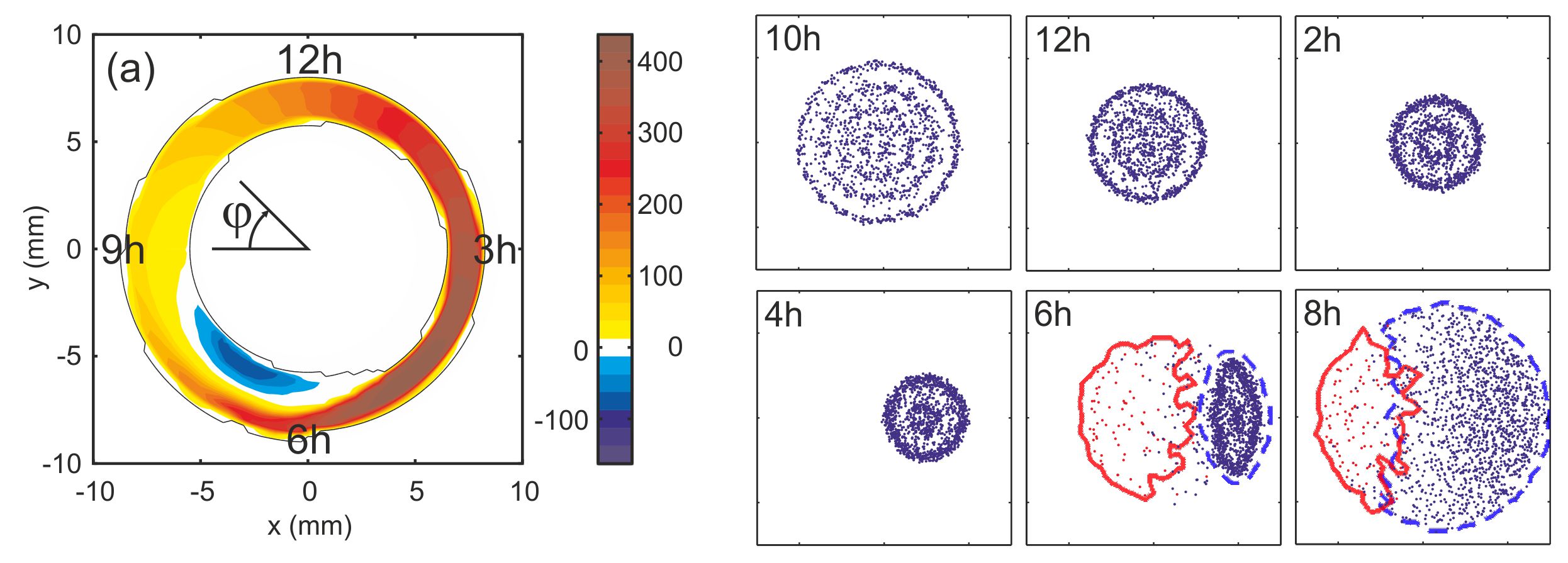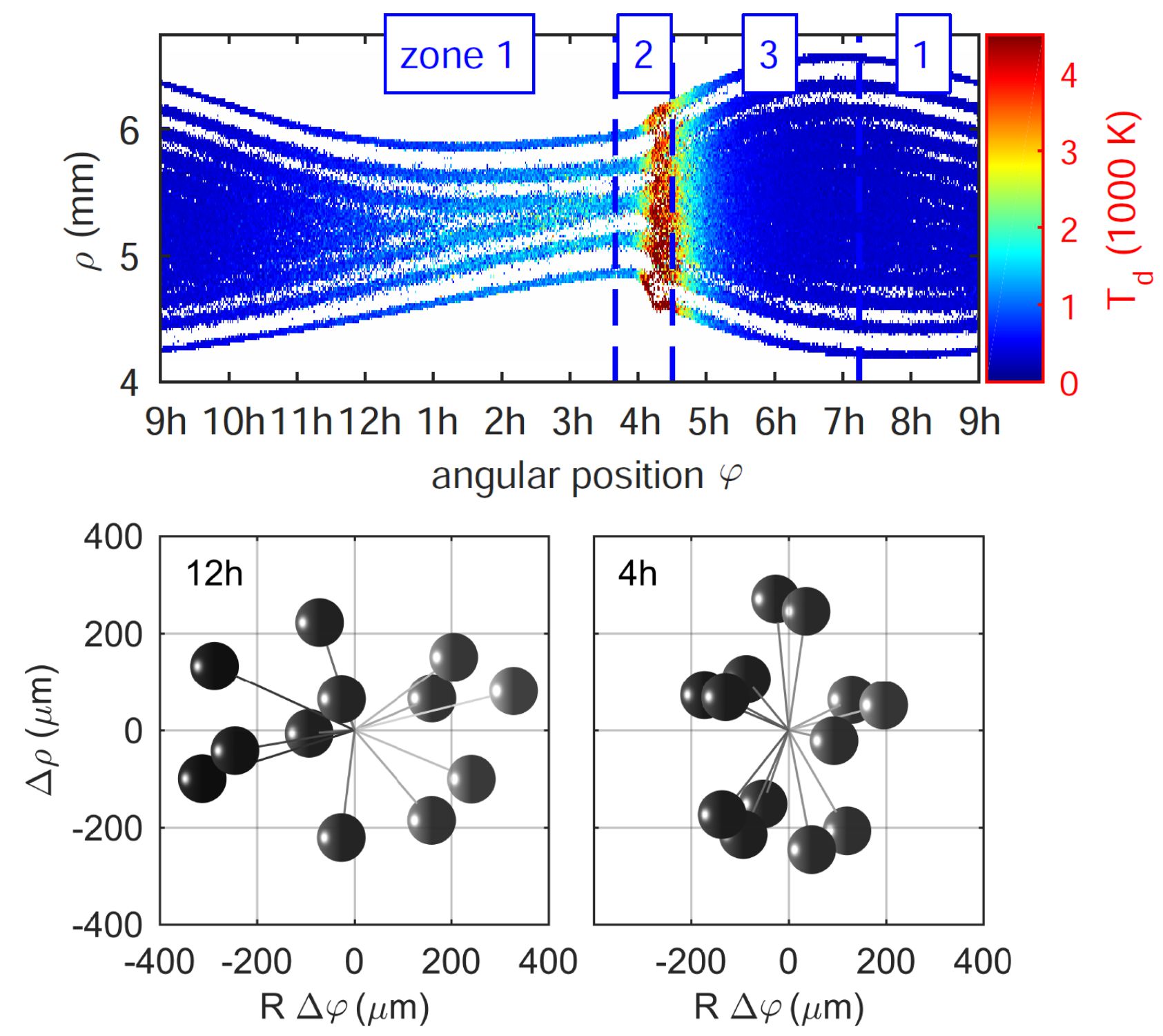
Complex plasmas are well suited for molecular dynamics simulations when the microparticles can be treated as small spheres interacting by a shielded Coulomb potential. In this way, the fast time scales of electron and ion motion, which make plasma simulation cumbersome, can be eliminated. Only the longest time scale is retained, which describes the motion of the microparticles. The microparticles are usually confined by an external potential trap.
In the present example, our interest is focused on the dust flow in a toroidal potential trap. The dust is driven in clockwise direction by an ion drag force and attains an equilibrium with friction by the neutral gas background. The torus is oriented upright, like a wheel. Therefore, gravity impedes the dust flow on the "morning" side (6h-12h) and accelerates it in the "afternoon" sector (12h-6h), which results in an inhomogeneous flow. The toroidal speed is color-coded in mm/s.
To our surprise, the dust flow develops a laminar phase that extends from 10h-5h, in which the flow occurs on nested shells. This shell structure is visualized by plotting the intersections of all microparticles with radial cuts during one full revolution. This is a nice example for a crystalline particle flow. Crystallization occurs, because the system is cooled by the gas background at 300K temperature. Due to the acceleration by gravity, the diameter of the flow shrinks from 10h to 4h and the number of shell is reduced from four to two. At the 6h position, the flow hits an obstacle formed by slow trapped particles and the particle system is suddenly heated. Behind the obstacle (8h), the system is still in a hot disordered phase. The crystalline flow is reestablished at 10h. [from: T. Reichstein and A. Piel, Phys. Plasmas 18, 083705 (2011) DOI ]
In a series of further investigations on inhomogeneous toroidal dust flows, we found that no obstacle is needed to generate local heating. Rather, there are critical flow conditions, which create a "hydraulic jump". In hydrodynamics, hydraulic jumps are known as "tidal bores" in the estuaries of rivers. In the crystalline dust flow, the hydraulic jump leads to rapid flow deceleration and spontaneous heating. The laminar flow region (zone 1) is again characterized by shell formation. The jump is located in zone 2 and shows an increase of the kinetic temperature to T>3000K. Behind the jump, the decelerated flow widens from three shells at 4h to seven shells at 7h. The simulation gives us full access to the microphysics of this transition. In the acceleration region, at 12h, the neighborhood of a microparticle is stretched in flow directions, while it becomes strongly compressed in flow direction during deceleration at 4h. The volume of this neighborhood remains nearly constant. This explains why this kind of medium is nearly incompressible [from: J. Wilms and A. Piel, Phys. Plasmas 24, 083703 (2017) DOI ].
The tricks of the trade
The workhorse of our molecular dynamics simulations is calculation on
graphics cards with the
CUDA
environment. All interaction forces between
N particles are calculated by an efficient parallel algorithm derived from
the N-body routine for gravitational interaction [1] but modified for
shielded Coulomb interaction. The simulations of crystalline flows have
modest requirements on computing power, with N ranging from 4096 to 16384.
Simulations of ion flows around microparticles require N=65636 to 131072.
Presently, we achieve a processing speed of up to 70 billion interactions
per second. The CUDA routine is described
here
and can be downloaded here.
[1] L. Nyland, M. Harris, and J. Prins, in GPU Gems 3, edited by H. Nguyen
(Pearson Education, Inc., 2008).
